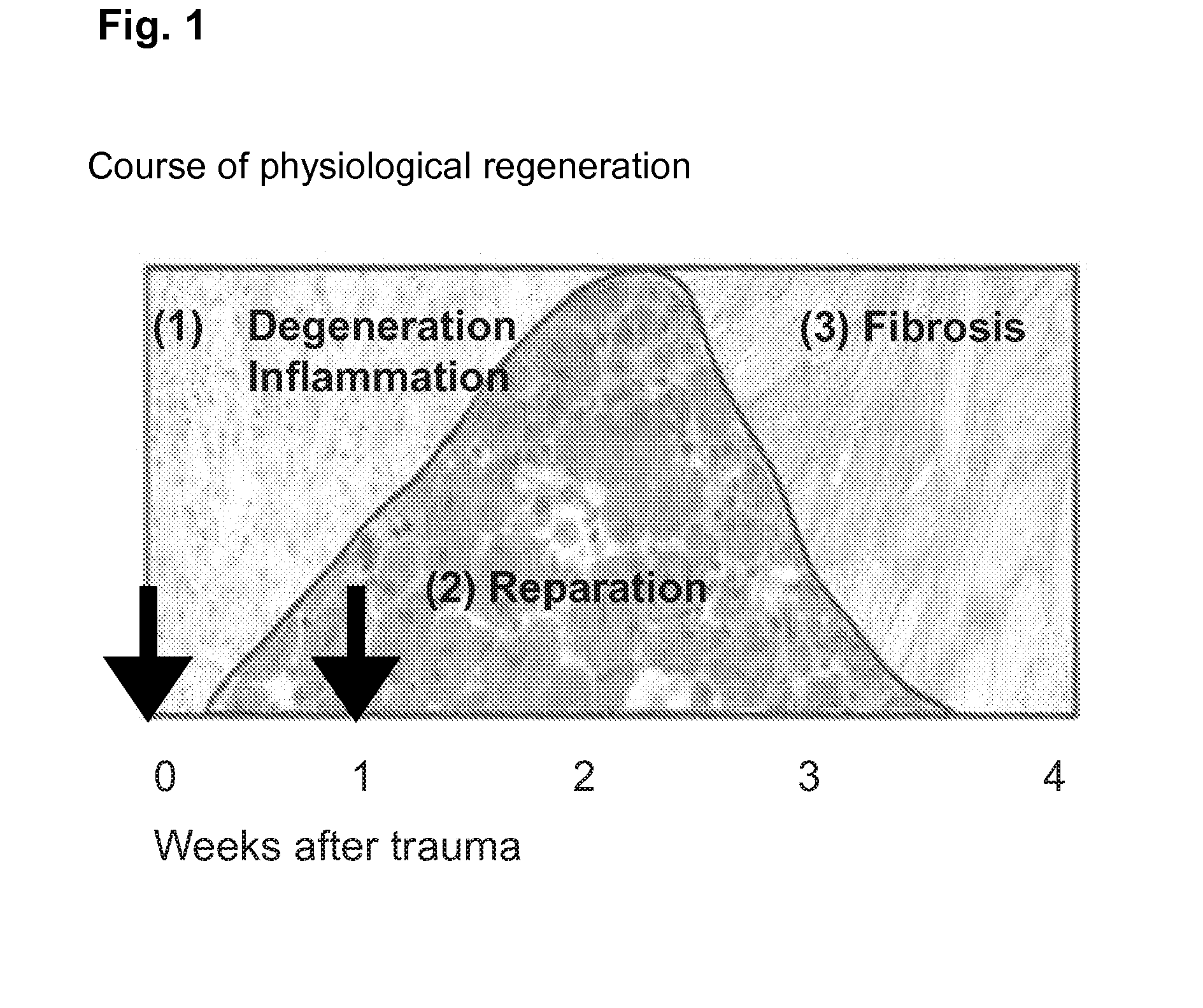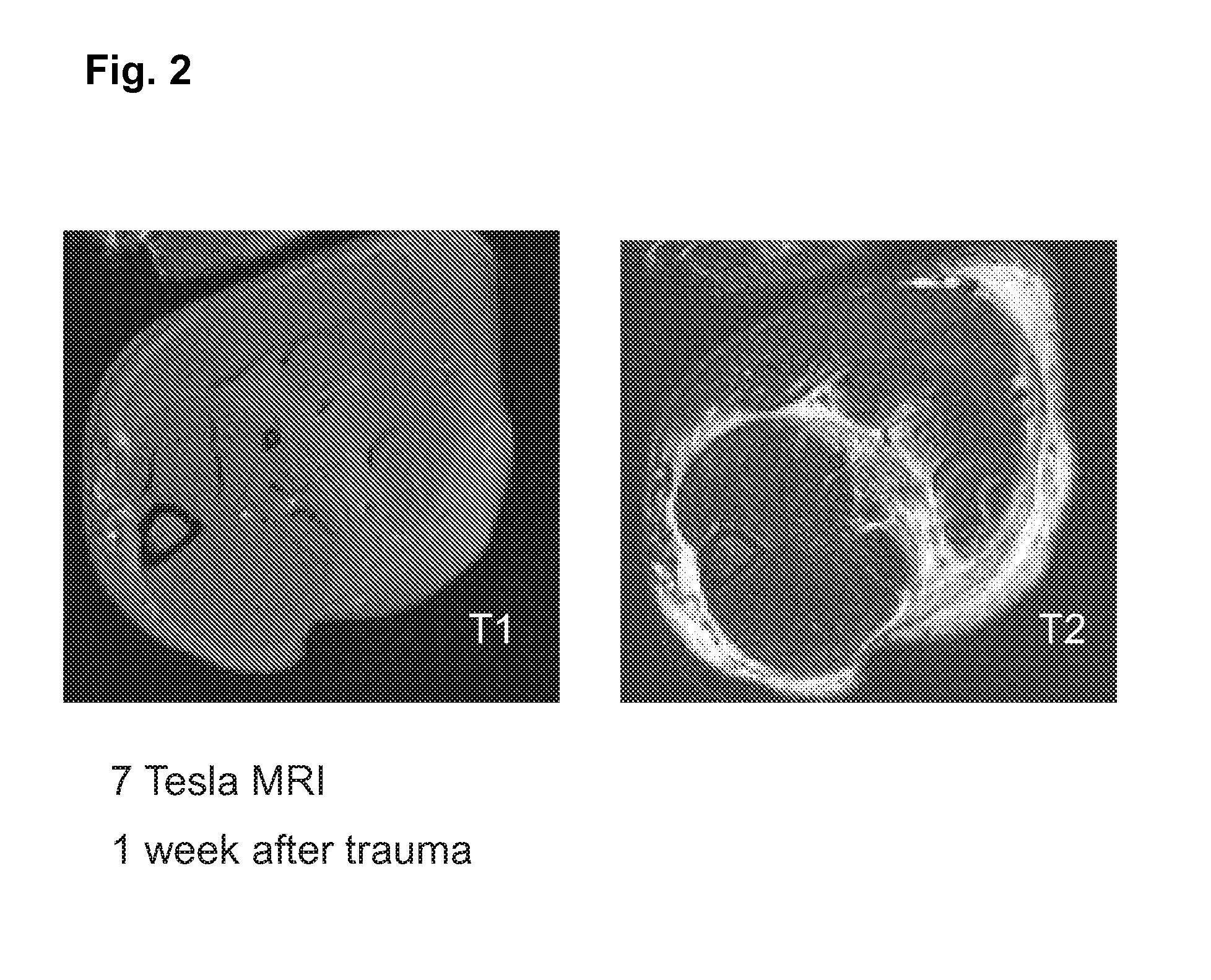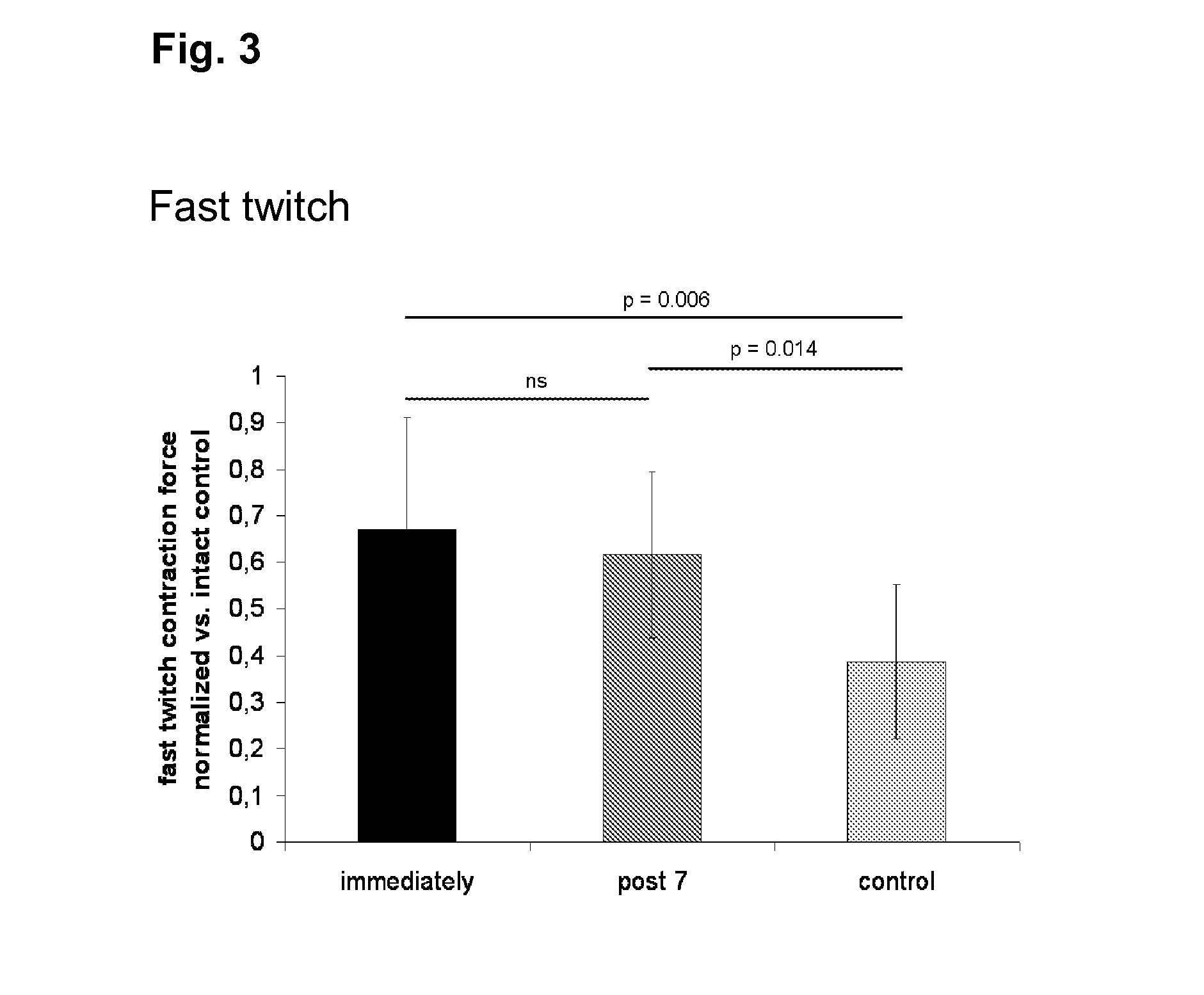Skeletal muscle regeneration using mesenchymal system cells
a technology of mesenchymal system cells and skeletal muscle, which is applied in the direction of skeletal/connective tissue cells, drug compositions, biocide, etc., can solve the problems of severe functional deficits, no improvement in muscle contraction force, and limited clinical application of mscs in skeletal muscle regeneration in the prior art, so as to accelerate the rehabilitation time, enhance skeletal muscle regeneration, and reduce pain in the subject
- Summary
- Abstract
- Description
- Claims
- Application Information
AI Technical Summary
Benefits of technology
Problems solved by technology
Method used
Image
Examples
example 1
Results of In Vivo Functional Muscle Testing
[0120]Fast twitch stimulation of the healthy right soleus muscles of all animals resulted in an average contraction force of 0.52±0.14 N. No decrease of successive contraction peaks was observed in uninjured or injured muscles irrespective of treatment. Stimulation with 9 mA and a frequency of 75 Hz at a duration of 3 seconds yielded tetanic contractions in all tested muscles reflecting their maximum contraction capacity. The latter amounted to 0.98±0.27 N in the uninjured soleus muscles. Tetanic maxima showed a continuous, linear decrease with successive stimulations in all muscles. This decrease could be described by a decline gradient, which was significantly different between the traumatized left and the non-traumatized right soleus muscles [−0.015±0.009 (left) vs. 0.031±0.014 (right), p-value<0.001]. The decline of the tetanic contractions was not influenced by cell therapy.
[0121]The ratio of fast twitch and tetanic forces represents ...
example 2
Results of Histological Analysis
[0124]H&E stains of muscles harvested 3 days after injury still showed a pronounced inflammatory reaction throughout the soleus with the infiltration of predominantly macrophages, but also of neutrophils and lymphocytes. Most of the necrotic myofibers had already been removed and multiple groups of regenerating centronucleated fibers could be observed surrounded by loose connective tissue with the above described inflammatory infiltration. In muscles harvested 10 days after crush injury the inflammatory reaction had almost disappeared. The connective tissue showed a condensation towards a more dense type, although still with active fibroblastic nuclei.
[0125]Three days after both immediate and delayed transplantation, groups of GFP+ MSCs or single MSCs could be observed in the cryosectioned soleus muscles. Representative pictures can be seen in FIGS. 5A and B. The transplanted MSCs were found predominantly in the interstitium throughout the muscles, a ...
PUM
| Property | Measurement | Unit |
|---|---|---|
| time | aaaaa | aaaaa |
| temperature | aaaaa | aaaaa |
| tension | aaaaa | aaaaa |
Abstract
Description
Claims
Application Information
 Login to View More
Login to View More - R&D
- Intellectual Property
- Life Sciences
- Materials
- Tech Scout
- Unparalleled Data Quality
- Higher Quality Content
- 60% Fewer Hallucinations
Browse by: Latest US Patents, China's latest patents, Technical Efficacy Thesaurus, Application Domain, Technology Topic, Popular Technical Reports.
© 2025 PatSnap. All rights reserved.Legal|Privacy policy|Modern Slavery Act Transparency Statement|Sitemap|About US| Contact US: help@patsnap.com



